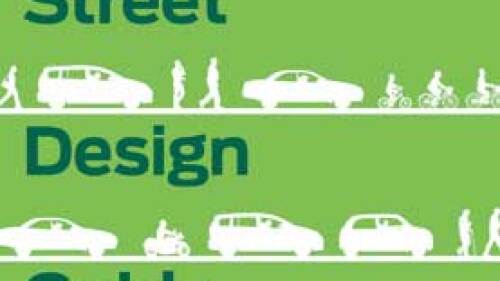Public/Private Partnerships
How can the public and private sectors work together to encourage more development around public transportation networks?
While the $1.5 trillion tax-cut bill passed by the U.S. House of Representatives is widely seen as beneficial for commercial real estate, one provision would eliminate a municipal financing tool that has been essential for housing, infrastructure, and industrial development investment for decades.
When it comes to the e-commerce explosion, it’s all about “the last mile,” and almost anything is imaginable. “The last mile can be executed on foot, bicycle, hand cart, unicycle, skateboard, jetpack, Uber, Lyft—the list goes on,” said Benjamin Conwell of Cushman & Wakefield, a former director of Amazon’s North American real estate operations, speaking at the 2016 ULI Fall Meeting.
Author Gary Sernovitz sees the American oil and gas renaissance as “the Internet of oil, a spark . . . that led to an industrial change of such scope and magnitude that we have woken up . . . in a once impossible world.” Yet public understanding of the shale revolution has lagged, leading to hype, scaremongering, and a failure to candidly discuss its urgent moral, technological, regulatory, and environmental challenges.
Speaking at the recent ULI Housing Opportunity Conference, Rick Haughey, vice president of industry technology initiatives at the Washington, D.C.–based National Multifamily Housing Council, likened the wiring of the United States to the internet to the early development of the nation’s highways, but as a cautionary tale, creating unintended winners and losers in the process.
Seven cities—Austin, Texas; Columbus, Ohio; Denver; Kansas City, Missouri; Pittsburgh; Portland, Oregon; and San Francisco—have been named finalists for the U.S. Department of Transportation’s (DOT) Smart City Challenge. DOT has pledged up to $40 million to one city to help it define what it means to be a “smart city.”
The Urban Land Institute has endorsed the Urban Street Design Guide, published last year by the National Association of City Transportation Officials. The guide embraces the unique and complex challenge of designing urban streets, aiming to make streets safe for people whether they are walking, biking, using transit, or driving.
Public/private partnerships (P3s) are critical to fixing aging transportation infrastructure and building new mass transit options across the United States, said former U.S. Transportation Secretary Ray LaHood in remarks that concluded a ULI conference in Detroit.
One of the legacies of the Olympic Games held in Vancouver four years ago is a light-rail line that has become something of an international model in transit circles.
On a sunny but bone-chilling windy day in late March, with the Rocky Mountain foothills flanking their views to the west, seven members of a ULI Advisory Services panel listened to the whistle of a freight train as it made its way slowly through the heart of Olde Town Arvada, Colorado, about seven miles (11.3 km) northwest of Denver. Their task: envisioning how changes to the physical environment could improve the health of Arvada residents.








